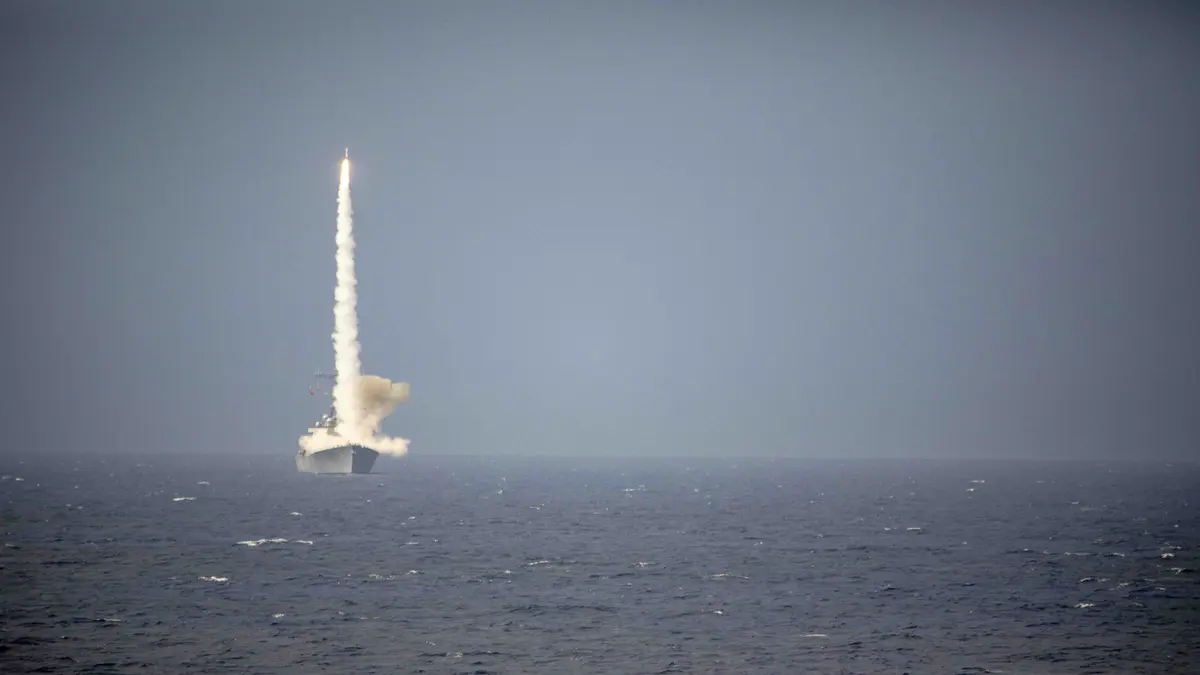In a significant leap forward in naval warfare technology, U.S. defense contractors — working closely with the Navy — have successfully tested an advanced missile defense system on the Navy’s latest guided missile destroyer platform. The system achieved a remarkable 95% intercept rate during live-fire exercises conducted in the Pacific Test Range, according to an official press release from the Department of Defense.
The sea trials marked the first full-scale deployment of the Aegis-X MKIII system, a multi-domain defense solution designed to track, engage, and neutralize a variety of simultaneous aerial threats, including cruise missiles, high-speed drones, and low-orbit projectiles.
“These results are historic. They demonstrate not only high accuracy, but also resilience in multi-vector attack scenarios,” said Admiral Thomas Caldwell, director of Surface Warfare Programs. “We now have the ability to protect fleet formations and coastal assets with unparalleled confidence.”
Simultaneous engagement, real-time response
The success of the Aegis-X MKIII is based on its ability to manage real-time multi-target tracking, while simultaneously allocating interceptors through an AI-enhanced fire control system. The system responded to a coordinated barrage of 20 incoming threats – including subsonic and supersonic targets with 19 successful intercepts.
The tests also demonstrated advanced radar modules and quantum-resistant encrypted communications, allowing seamless coordination between destroyers and nearby support ships and air assets.
“This is not just a good missile; we have completely redefined the engagement envelope,” explained Dr. Rachel Sonoda, chief engineer at Atlas Dynamics, one of the prime contractors. “It’s a fully adaptive system that learns and responds to every situation.”
Strategic Shield for Modern Fleets
The destroyer platform, designated DDG-149 and still under development, is part of the Navy’s new Constellation-class upgrade path, designed to provide distributed lethality and mobile force projection in disputed territories.
The Aegis-X MKIII system is seen as a critical layer for protecting U.S. assets in forward-operating zones, particularly in the Indo-Pacific, where adversaries have invested heavily in long-range precision munitions and swarm-capable UAVs.
“This will change how adversaries calculate risk,” said retired Vice Admiral James Thorne, now a senior fellow at the Naval War College. “It extends the safety buffer for carrier groups and coastal structures.”
Beyond the ship: Shore-based applications are coming
The Defense Department confirmed that the land-based variant of the Aegis-X MKIII system is already undergoing static tests in Arizona, with deployment plans being considered for forward NATO installations in Europe.
“What we’re providing is not just a ship-to-ship capability — it’s a flexible shield for multi-domain operations,” DoD Undersecretary Elaine Nichols added. “It’s designed to operate on land as well as it does at sea.”
The Navy expects full operational capability for the destroyer-based platform by mid-2026, with plans for integration into amphibious assault groups and theater command structures to be finalized soon.
Also Read: Japan Officially Joins UK-Italy in Global Combat Air Program (GCAP)
Frequently Asked Questions
The Aegis-X MkIII is powered by AI-enhanced fire control, which means it can track and intercept multiple threats simultaneously with quick decisions. Unlike older systems, it can also handle cruise missiles, drones, and low-orbit projectiles simultaneously – making it a game-changer for modern naval defense.
The Indo-Pacific is currently one of the most important security regions in the world, where nations are testing hypersonic weapons and advanced drones. The US Navy sees the region as a priority, so deploying the Aegis-X MkIII there helps protect fleets and allies against growing threats.
Cybersecurity is a hot trend in both defense and technology. The Aegis-X MkIII uses quantum-resistant encryption, which protects ships and shore bases from hacking attempts. This ensures that radar, targeting data, and fleet communications are also protected against next-generation cyber threats.








Leave a Reply